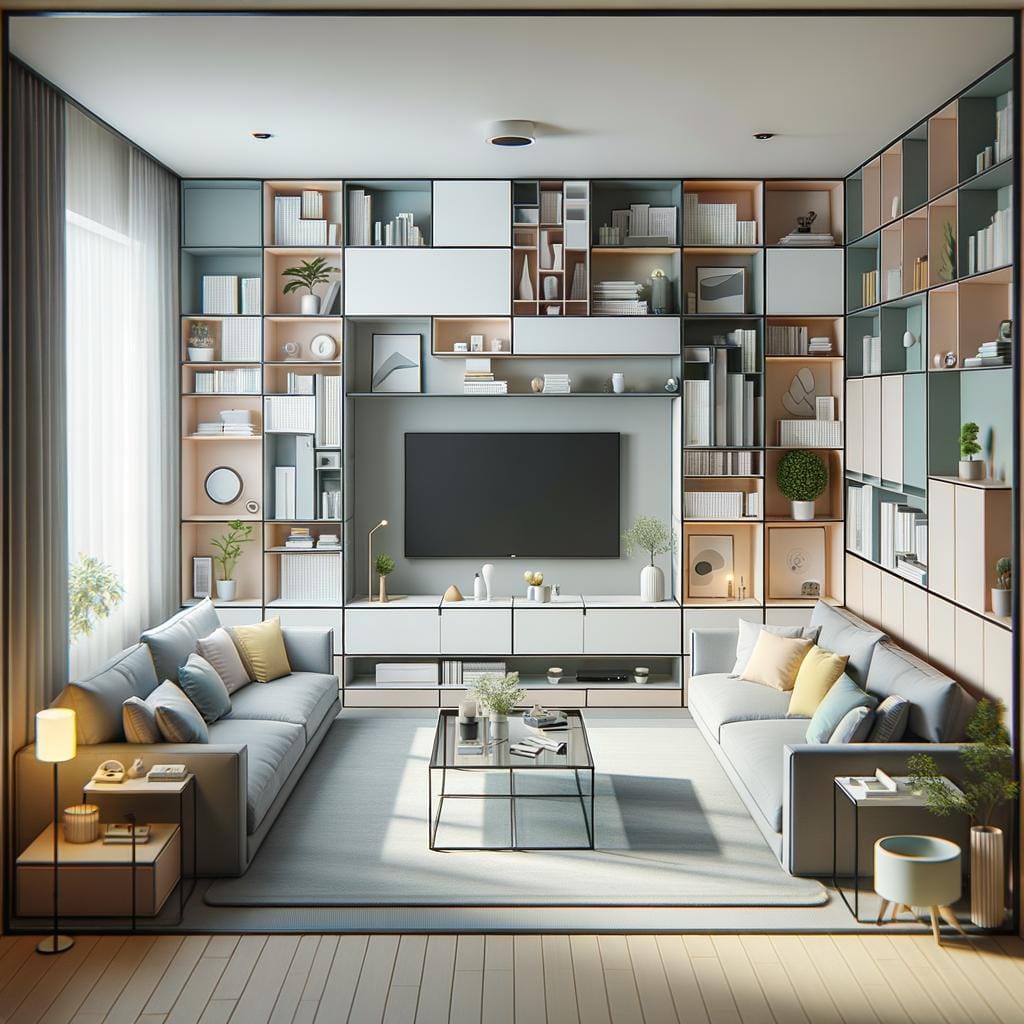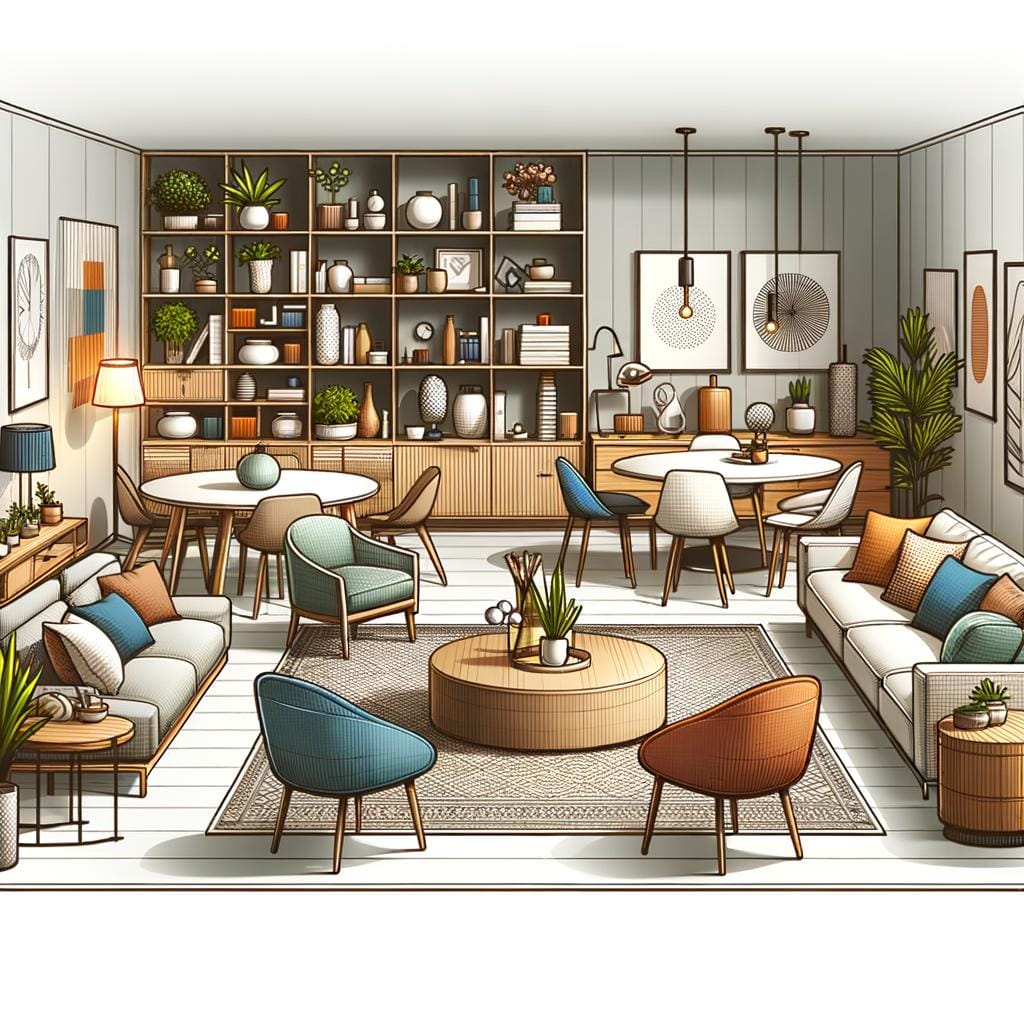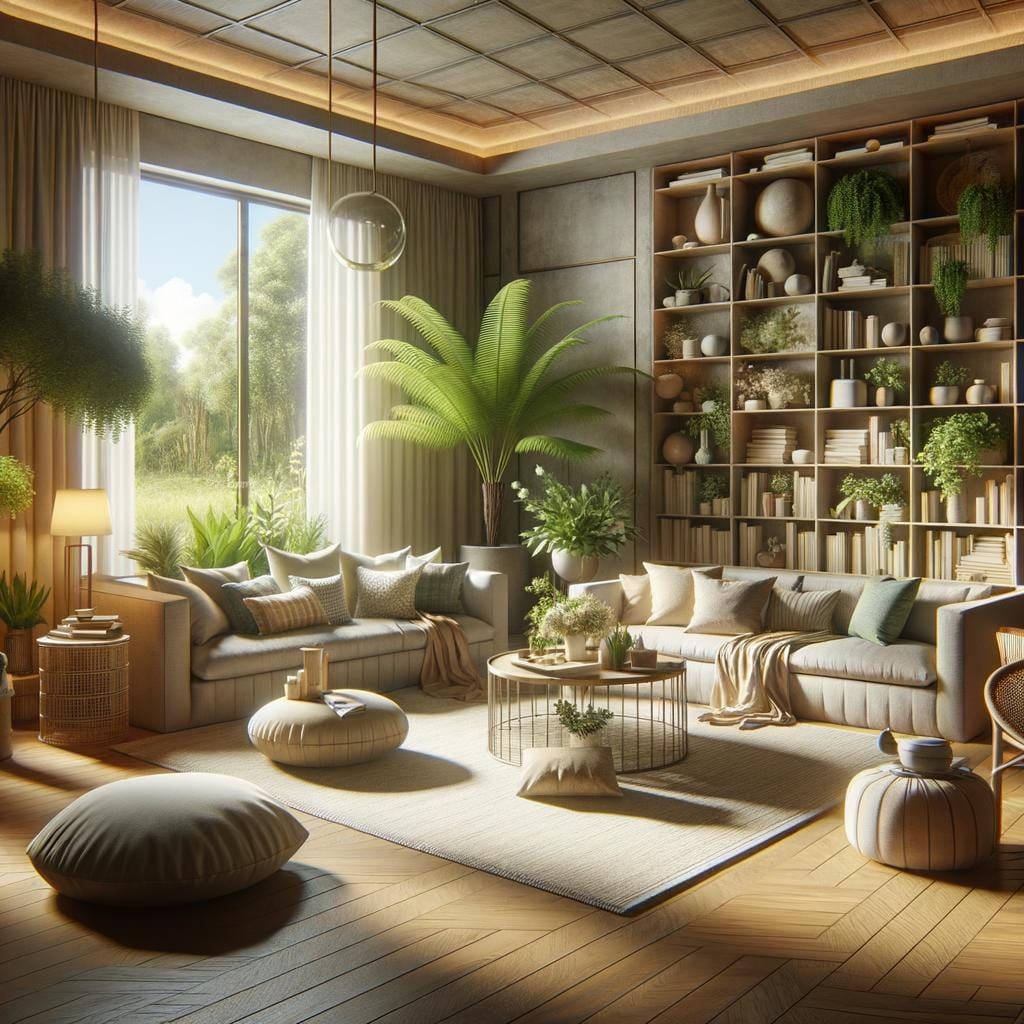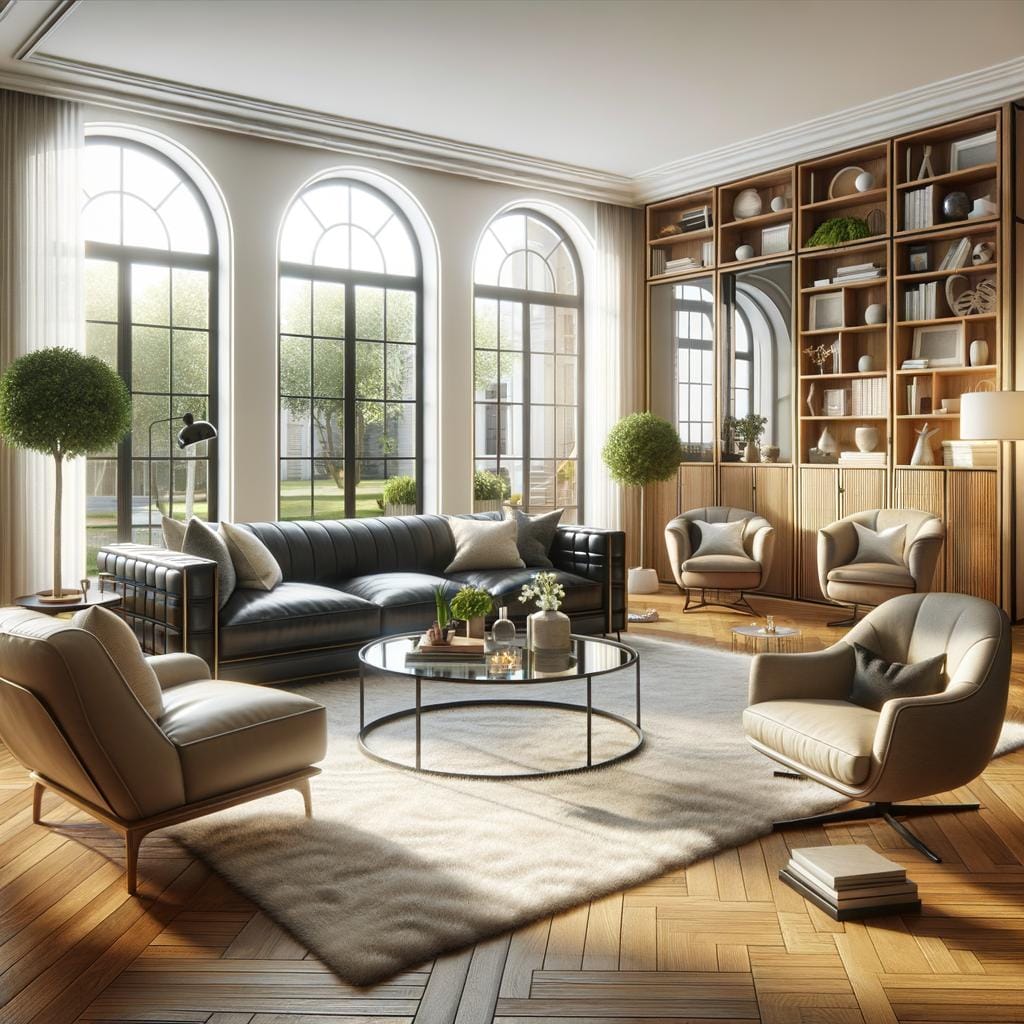Creating a seamless living room flow optimization is essential for maximizing space and creating a harmonious environment. Efficient living room design not only enhances the aesthetics of the space but also improves functionality and overall comfort. By strategically arranging furniture, incorporating color and lighting, decluttering, and following Feng Shui principles, you can achieve a balanced and calming flow within your living room.
Assessing your current living room layout is the first step in identifying obstacles and pain points that may be hindering optimal flow. Understanding how to navigate through the room and recognizing areas where movement is restricted will help you determine the necessary changes needed to improve flow. By addressing these issues, you can create a more open and inviting space that allows for easy circulation and access to different areas within the room.
Incorporating multifunctional furniture pieces, creating defined areas for various activities, and adding personal touches are all key elements in optimizing the flow of your living room. By taking these steps, you can embrace a streamlined, efficient, and beautiful living environment that meets both your practical needs and aesthetic preferences.
Stay tuned as we explore furniture placement strategies, color and lighting techniques, decluttering tips, Feng Shui principles, multi-functional furniture options, personalization ideas, and more to help you achieve the perfect living room flow optimization.
Assessing Your Current Living Room Layout
When it comes to optimizing the flow of your living room, the first step is to assess your current layout and identify any obstacles or pain points that may be hindering a smooth circulation within the space. This process involves taking a critical look at the placement of furniture, the arrangement of decor items, as well as any structural elements that may be impeding movement.
One common obstacle in many living rooms is bulky furniture that overwhelms the space and disrupts the flow. Oversized sofas or coffee tables placed in high-traffic areas can create bottlenecks and make it challenging to move around comfortably. By identifying these obstacles, you can start to envision a new layout that prioritizes functionality and ease of movement.
In addition to furniture placement, it’s essential to also consider how lighting and color impact the overall flow of your living room. Dark corners or harsh overhead lighting can create shadows and contribute to a sense of congestion. By strategically adding layered lighting options and incorporating light, neutral colors on walls and furniture, you can create a more open and airy atmosphere that enhances the flow of energy throughout the room.
Furniture Placement Strategies for Improved Flow
The placement of furniture in a living room can greatly impact the flow and overall feel of the space. By strategically arranging your furniture, you can optimize the layout to create a more open, spacious, and efficient environment. One key tip for improving flow is to ensure that there is enough space to move around easily without obstacles or obstructions. This can be achieved by leaving pathways clear and avoiding placing furniture too close together.
Another important strategy for maximizing space and flow in your living room is to consider the function of each piece of furniture. For example, if you have a large sofa that takes up a significant amount of space, try positioning it against a wall to free up central areas for movement. Additionally, using multipurpose furniture such as ottomans with storage or nesting tables can help reduce clutter and optimize space usage while maintaining an aesthetically pleasing layout.
In terms of creating a cohesive and harmonious flow in your living room, consider the visual balance of the furniture arrangement. Symmetry can help create a sense of order and calm within the space, while asymmetrical layouts can add visual interest and dynamism. Experimenting with different configurations until you find one that feels balanced and comfortable for you can make a significant difference in the overall ambiance of your living room.
| Living Room Flow Optimization Tip | Details |
|---|---|
| Consider traffic flow | Ensure clear pathways for easy movement |
| Optimize function | Choose multipurpose furniture to maximize utility |
| Create visual balance | Experiment with symmetry and asymmetry for harmonious flow |
Utilizing Color and Lighting to Enhance Flow
When it comes to optimizing the flow of your living room, utilizing color and lighting effectively can make a significant difference in creating a harmonious environment. The colors you choose for your walls, furniture, and decor can impact the overall feel of the space, while proper lighting can enhance the ambiance and functionality of the room. By carefully considering these elements, you can create a visually appealing and balanced living room that promotes a sense of harmony and tranquility.
Choosing the Right Colors
When selecting colors for your living room, it’s important to consider the mood you want to create. Soft, neutral tones like beige, cream, or light gray can help open up a space and make it feel larger. If you prefer a pop of color, opt for accents in shades that complement each other for a cohesive look. Additionally, incorporating natural elements such as plants or wooden furniture can bring warmth and depth to the room.
Strategic Lighting Placement
Proper lighting is essential not only for function but also for creating ambiance in your living room. Consider a mix of overhead lighting, task lighting (such as reading lamps), and ambient lighting (such as dimmable lights) to provide versatility depending on the time of day or activity taking place in the room. Natural light is also crucial; maximize natural light sources by keeping windows clear of obstructions and using light-filtering window treatments to control brightness.
Creating Balance With Color and Light
To enhance flow in your living room, aim for a balance between color and lighting. Avoid overwhelming the space with too many bold colors or harsh lighting sources that may disrupt the harmony of the room. Instead, use color strategically to highlight focal points or create visual interest without overwhelming the senses.
Similarly, ensure that your lighting choices are functional while also enhancing the overall aesthetic appeal of the space. By finding this balance between color and light, you can create a harmonious environment that promotes relaxation and comfort in your living room.
Decluttering and Organization Techniques
Assessing Your Current Setup
Before diving into decluttering and organization techniques, it’s important to take a step back and assess your current living room setup. Identify any areas that feel cramped, cluttered, or obstruct the natural flow of movement within the space. Take note of furniture pieces that may be overcrowding the room or blocking pathways. By understanding the pain points in your layout, you can then develop a plan to address them effectively.
Implement Smart Storage Solutions
One of the key aspects of decluttering and optimizing flow in your living room is utilizing smart storage solutions. Invest in furniture pieces that offer hidden storage compartments, such as ottomans with built-in storage or coffee tables with drawers. Additionally, consider incorporating shelving units or wall-mounted racks to free up floor space and keep items organized. By having designated storage areas for belongings, you can prevent clutter from accumulating on surfaces and maintain a more streamlined environment.
Maintain a Regular Cleaning Routine
In order to keep your living room optimized for flow, it’s essential to establish a regular cleaning routine. Set aside time each week to declutter surfaces, organize belongings, and remove any unnecessary items from the space.
By staying on top of cleaning tasks, you can prevent clutter from building up and maintain a clear pathway for movement throughout the room. Incorporating this habit into your weekly schedule will not only improve the flow within your living room but also create a more inviting and harmonious environment for relaxation and socializing.
Incorporating Feng Shui Principles
Feng Shui principles can play a significant role in optimizing the flow of your living room. By incorporating these ancient Chinese practices, you can create a space that not only looks visually appealing but also promotes harmony and balance.
One key aspect of Feng Shui is the arrangement of furniture to allow for the smooth flow of energy, or chi, throughout the room. This involves ensuring that pathways are clear and that furniture is positioned in a way that does not obstruct movement.
In order to enhance the flow of energy in your living room, consider incorporating elements such as plants, water features, and mirrors. Plants bring vitality and freshness to the space, while water features help promote tranquility and relaxation.
Mirrors can be strategically placed to reflect light and create the illusion of more space, ultimately contributing to the overall flow optimization. Additionally, it is important to declutter your living room by removing unnecessary items that may block the natural flow of energy.
Another essential aspect of implementing Feng Shui principles in your living room is paying attention to the balance of elements. This includes using a mix of colors, textures, and shapes to create a harmonious environment. Earth tones like brown and green can ground the space, while pops of color can energize it.
By carefully selecting decor elements that resonate with you personally, you can create a space that not only looks beautiful but also feels balanced and inviting. Through these practices, you can achieve a calm and balanced flow within your living room while reaping the benefits of an optimized living space.
Creating Defined Areas Within the Living Room
When it comes to living room flow optimization, creating defined areas within the space is essential for segregating spaces for different activities. By delineating specific areas for various purposes, you can enhance the functionality and efficiency of your living room layout. Whether it’s a cozy reading nook, an entertainment zone, or a workspace, dividing your living room into distinct areas helps maintain order and organization.
One effective way to create defined areas within your living room is by using area rugs to visually separate different sections. Placing a rug under a particular group of furniture can signify that area as a designated space for relaxation or socializing.
Additionally, using furniture arrangements such as L-shaped sofas or bookshelves can divide the room into smaller zones without blocking the overall flow of the space. These strategic placements help define boundaries while maintaining an open and spacious feel.
Another practical approach to segregating spaces in your living room is by incorporating architectural elements like room dividers or open shelving units. These structures not only provide visual separation but also offer additional storage or display opportunities. By carefully planning and organizing these defined areas within your living room, you can optimize the flow of movement and create a multifunctional space that caters to various activities while maintaining a cohesive and harmonious environment.
Adding Multi-Functional Furniture Pieces
When it comes to optimizing the flow in your living room, one essential aspect to consider is the furniture you choose to incorporate. By selecting multi-functional furniture pieces, you can maximize utility without compromising the overall flow of the space. These versatile pieces not only serve their primary function but also provide added benefits such as storage solutions, flexibility in usage, and space-saving designs.
To make the most out of multi-functional furniture pieces, consider the following options:
- Convertible sofa beds: Ideal for accommodating guests while saving space during daytime use.
- Ottomans with hidden storage: Perfect for stashing away blankets, pillows, or other items to declutter your living room.
- Nesting tables: Offer versatility in surface space when needed and can be easily tucked away when not in use.
With these types of furniture pieces, you can maintain a seamless flow in your living room while ensuring that every item serves a functional purpose. By strategically incorporating multi-functional furniture, you can optimize your living room layout without sacrificing style or convenience.
Remember that when selecting multi-functional furniture pieces for your living room flow optimization, it’s essential to prioritize both form and function. Choose items that not only contribute to the aesthetic appeal of your space but also enhance its efficiency and usability. With careful consideration and thoughtful selection, you can create a harmonious balance between maximizing utility and maintaining a smooth flow throughout your living room.
Final Touches and Personalization
After implementing furniture placement strategies, utilizing color and lighting techniques, decluttering, incorporating Feng Shui principles, creating defined areas, and adding multi-functional furniture pieces to optimize your living room flow, it’s time to add the final touches that truly personalize the space. These finishing touches will help put your stamp on the optimized living room flow and make it a reflection of your unique personality and style.
1. Gallery Wall: Create a gallery wall filled with personal photos, artwork, or inspirational quotes to add a touch of character to the space. This not only adds visual interest but also serves as a conversation starter for guests. Make sure to consider the layout and spacing of your gallery wall to ensure it complements the flow of the room.
2. Throw Pillows and Blankets: Add throw pillows and blankets in coordinating colors or patterns to enhance comfort and coziness in your living room. Not only do these accessories provide additional seating options for guests, but they also allow you to introduce textures and patterns that tie the room together.
3. Indoor Plants: Incorporating indoor plants into your living room can bring life to the space while also improving air quality. Choose plants that thrive in indoor environments and complement your decor style. Place them strategically around the room to enhance visual appeal while maintaining the optimized flow you’ve worked hard to achieve.
By paying attention to these final personalized touches, you can transform your living room into a welcoming and harmonious environment that reflects your taste and values. Remember that small details can make a big impact on the overall feel of your space, so take the time to carefully curate these elements for a truly customized living room experience. Embrace these final touches as the cherry on top of your living room flow optimization efforts.
Conclusion
In conclusion, optimizing the flow of your living room is not just about creating a visually appealing space, but also about enhancing the functionality and overall experience within the room.
By taking the time to assess your current layout, rearrange furniture strategically, utilize color and lighting effectively, declutter and organize your space, incorporate Feng Shui principles, create defined areas for different activities, add multi-functional furniture pieces, and personalize the space to reflect your style, you can truly transform your living room into a streamlined, efficient, and beautiful environment.
A well-optimized living room enhances the quality of life for you and your family by promoting better movement and circulation throughout the space. With improved flow, you can enjoy a more seamless transition from one activity to another, whether it’s relaxing with a book on the couch or entertaining guests during a gathering. This optimization not only improves the functionality of the room but also contributes to an overall sense of peace and harmony in your home.
Embracing these strategies for living room flow optimization allows you to make the most out of your space while creating a peaceful sanctuary where you can unwind and recharge. By implementing these techniques and adding your personal touch to the design, you can achieve a harmonious balance between aesthetics and practicality in your living room.
So go ahead, take on the challenge of optimizing your living room flow and enjoy the benefits of a well-designed and organized space that elevates both your daily routines and special moments shared with loved ones.
Frequently Asked Questions
How Do I Make My Living Room Flow?
Making your living room flow involves creating a cohesive and harmonious design that allows for easy movement and visual continuity.
You can achieve this by choosing a color palette that flows smoothly throughout the space, arranging furniture in a way that promotes good traffic flow, incorporating various textures and patterns, and ensuring that all elements work together seamlessly to create a balanced look.
How Can I Make My Room Flow Better?
Improving the flow of your room can be achieved by decluttering the space and getting rid of any unnecessary items that disrupt the visual continuity. It is also essential to maintain a sense of balance by positioning furniture in a way that allows for easy navigation around the room.
Incorporating elements like area rugs, lighting, and artwork can help tie everything together and create a sense of cohesion.
How Do I Optimize Space in My Living Room?
Optimizing space in your living room involves maximizing the functionality of the area while maintaining a sense of openness and comfort. To achieve this, consider utilizing multifunctional furniture pieces such as storage ottomans or nesting tables, which can serve dual purposes without taking up too much space.
Additionally, using vertical storage solutions like wall-mounted shelves or cabinets can help free up floor space and keep clutter at bay. Finally, choosing furniture with exposed legs can create an illusion of more space by allowing light to pass through underneath.

Hello, I’m April Denton, your go-to expert for all things home decluttering and organization. With over a decade of experience helping individuals transform their living spaces into serene, clutter-free sanctuaries, I am passionate about the life-changing benefits of decluttering. My journey into the world of organization began out of necessity, juggling a busy career and a bustling household. I quickly realized that a well-organized home was the key to a more balanced, stress-free life.





